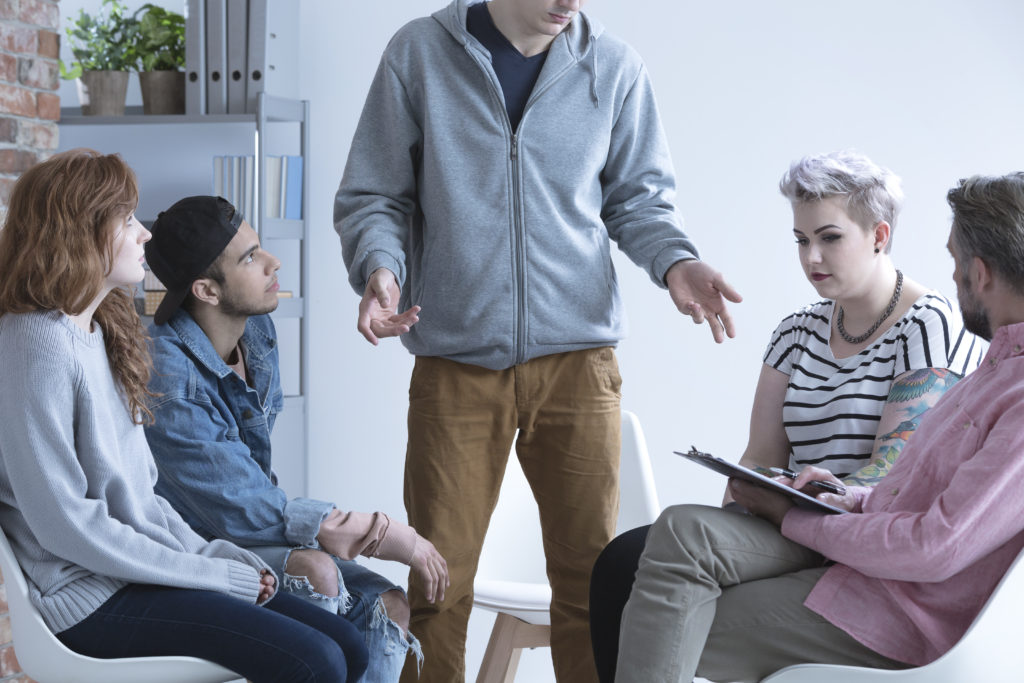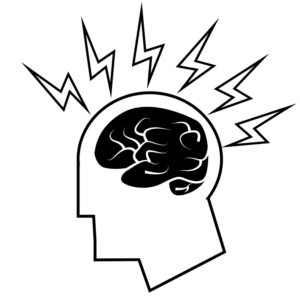Right now, scientists are scrambling to uncover new ways to approach the treatment of pain and in the process have uncovered some rather astounding facts about pain in people and in other animals. Female and male mice experience pain totally differently and it’s likely no coincidence that our species also reports different experiences based on gender.
Lately scientists have also started to reevaluate the power of the placebo – recognizing that self-belief is more than just a mere sugar pill. Not only that, but neuroscience and the latest technological advances in neuroimagery have helped us to map pain on the brain so that we can perhaps create better more targeted pharmaceuticals that actually deal with the root of the pain problem.
Opioids are only temporarily effective and not a great solution for chronic pain. Multiple modalities are the best ways to approach pain, and we finally have imagery of our brains on meditation, yoga, acupuncture and Tai Chi. These practices are no longer considered “woo woo” or pseudoscience but viable solutions to this experience we call pain. These amazing facts about pain how we experience and what can be done about it are more than just helpful, they’re hopeful.
- Experiencing pain is not pleasant, but our pain does serve a purpose. We evolved to experience pain so that we could learn from difficult situations.
- Source
- Nociceptors are nerve endings that detect pain including pain emitted by blunt force or a hot object.
- Source
- Chronic pain affects over 115 million Americans which is more than diabetes, heart disease, and cancer combined.
- Source
- Testing for pain is difficult as generally speaking pain is a subjective experience.
- Source
- As pain is so subjective and individualized, so must be the approach to treatment. Multimodal approaches to chronic pain are likely the best route towards relief.
- Source
- A recent study on physical touch and analgesia showed that the touch of a close loved one actually reduces our experience of pain.
- Source
- The opposite may be true about pain and loved ones. When someone you love ignores you the experience is “felt” in the brain the same way as pain.
- Source
- Though a subjective experience, a new definition of pain has been proposed by the International Association for the Study of Pain (IASP) which includes language about “beliefs, attitudes, threat appraisals, coping mechanisms, and attention.”
- Source
- The placebo effect is no small wonder. In fact, the placebo response is one of the strongest responses we have against pain.
- Source
- “So we’re all in pain right now, from whatever injuries we’ve ever had; it’s just that your brain has set the levels of its own endogenous opioids to a point where you don’t feel it anymore.” – Eric Vance
- Source
- Next time you bump your head and curse, don’t apologize say, “I’m dealing with my pain.” because cursing actually helps to reduce the experience of pain.
- Source
- Opioids are used to treat pain primarily in America. In fact, Americans consume 80% of the world’s opioids.
- Source
- The majority of long-term opioid users started off being treated for acute pain.
- Source
- Spice is not actually a taste. Polymodal nociceptors in the mouth detect spice as heat or painful burning experience.
- Source
- Green lighting actually soothes and alleviates migraines while blue, yellow, and red light irritates the experience of a migraine.
- Source
- There are actually 17 different types of headaches.
- Source
- Neuroscientists are using functional magnetic resonance imaging (fMRI) to map the brain’s response to pain in hopes of making the experience of pain more objective.
- Source
- Scientists are using spider venom to create new painkillers. The venom that is typically used to immobilize prey may be a powerful analgesic.
- Source
- Comfrey root and grated ginger are great alternatives to treat lower back pain.
- Source
- In 1851 Marijuana was added to the U.S. Pharmacopeia and among other things listed as a pain reliever.
- Source
- Brain tissue does not feel pain. Brain surgeons who are operating don’t even apply anesthesia to the brain itself.
- Source
- Your “funny bone” isn’t a bone at all. It’s a nerve called the Ulnar nerve. We feel two sensations of pain because the nerve is compressed somewhere in the middle of the axon, the reaction goes in both directions (up to your brain and out to your pinky finger) which is why we feel that “funny” jolt of pain on either side.
- Source
- Modulation networks become activated both when we experience pain and need to move away from it and when we are exercising. Endorphins and enkephalins help us to feel good after an experience of pain.
- Source
- Endorphins are endogenous opioids that are released when we exercise and when we experience pain. While many people in pain don’t feel they can exercise, it is exercise that actually helps people recover from and experience less pain.
- Source
- Crohn’s Disease is an inflammation of the digestive tract which can cause extremely uncomfortable abdominal pains and even arthritis. A relatively new procedure called Vagus Nerve Stimulation (VNS) stimulates the vagus nerve and dampens inflammation that causes Crohn’s disease.
- Source
- Naked Mole Rats are strangely immune to the pain felt from acid. They also don’t seem too bothered about the feeling of spicy heat.
- Source
- Sorry ladies but it appears as though you suffer from pain more than men, or at least more frequently report more instances of pain.
- Source
- The pain experience is so different between male and female mice and male and female humans that scientists are now looking at ways to create different pain medications tailored to their needs.
- Source
- The Amish use apple cider vinegar, ginger, and garlic to relieve leg cramping.
- Source
- In January 2019, scientists at Stanford identified neural pathways related to pain and the perceived intensity of the experience. It turns out that the damaged basolateral amygdala (BLA) section of the brain may “turn down the dial” on the unpleasant perception of pain and even switch off our natural tendency to want to avoid that pain.
- Source
- Cognitive Behavioral Therapy and Mindfulness practices are used to help people cope with pain as these approaches tackle our belief’s about pain and it’s level of power over our lives. By de-emotionalizing the experience of pain, redirecting focus away from ruminating thoughts you can experience less pain and move forward more quickly.
- Source
- Laughter, excitement, and love all raise endorphins and lower pain.
- Source
- Hydrating is an excellent way to avoid pain. Staying hydrated can prevent migraines and keep muscles from cramping up.
- Source
- Though not an easy decision to make, getting a handle on your workload and your relationship at work may completely eliminate your experience of chronic low back pain.
- Source
- Are you nervous about heading in for surgery? Consider training your spouse in the fine art of a good foot massage. Foot massages have been demonstrated to reduce pain levels in post-operative patients even after cardiac surgery.
- Source
- Experiencing muscle soreness after a high-intensity interval training (HIIT) workout, try self-massage with a foam roller.
- Source
- It may seem counterintuitive but bed rest is one of the worst ways to heal chronic low back pain. The opposite is the case. Staying active can not only eliminate your current pain but prevent pain and injury down the road.
- Source
- Scientists believe that arthritis may have been a large contributor to why humans survived the Ice Age.
- Source
- Smoking can actually cause back pain and the pain associated with fibromyalgia.
- Source
- Rolling your feet and stretching your calves are excellent ways to prevent and eliminate plantar fasciitis.
- Source
- A few decades ago it was believed that babies could not feel pain. We now know that a nervous system is fully developed at 26 weeks.
- Source
- We discovered gout in the fossil of a tyrannosaurus rex. Relatives of the dinosaur (reptiles and birds) may also develop gout.
- Source
- Yoga, Tai Chi, and Qigong are great alternative methods for treating chronic back pain.
- Source
- Nocebo is a phenomenon that is linked to the placebo effect and may impact your pain. Try replacing “nocebo” language that focuses on negativity with positive “placebo” language that focuses on belief. Placebo is one of the strongest resources we have for pain relief so be sure to tap into your belief in yourself every day.
- Source
- Chronic back pain may shrink the thinking part of your brain.
- Source
- In recent years acupuncture has turned up an excellent therapy for relief from chronic back pain as well as pains in the head neck and shoulders.
- Source
- Opioids are not the only drug uses for pain. NSAIDs, benzodiazepines, and SNRIs are also commonly prescribed to block or dull pain. Each class of drug has side effects and discontinuation difficulties to be considered before taking.
- Source
- Mindfulness meditation is one of the most powerful resources you have available to help eliminate the experience of chronic pain. The mechanisms are actually distinct from placebo and were not reversible using drugs like naloxone.
- Source
- Redheads may experience more pain due to the fact that receptors for melanocyte-stimulating hormone function differently. Redheads typically need more pain analgesic medicine to feel the same level of pain relief and are more likely to burn instead of tan.
- Source
- Eating a diet rich in vitamins and minerals over the course of your life will have a dramatic impact on your pain levels both acutely and as you age.
- Source

